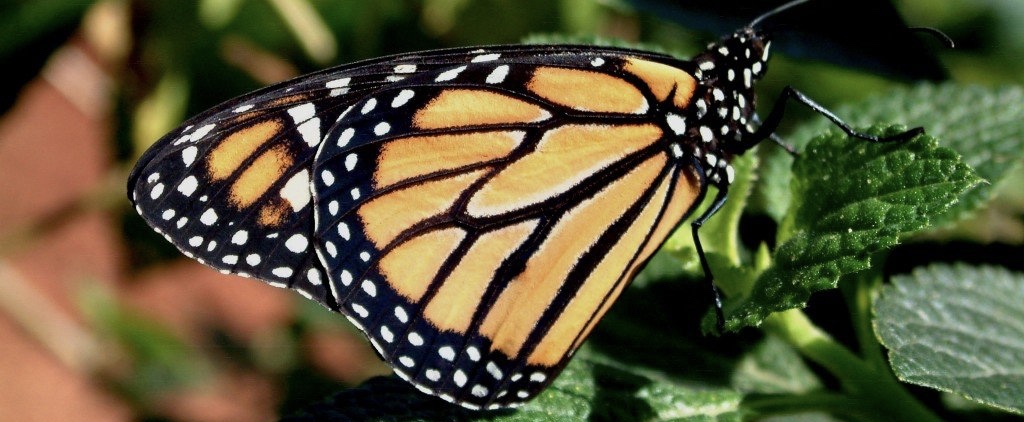ANIMAL: Monarch Butterfly Danaus plexippus Type of Animal: Brush-Footed Butterfly Habitat: Areas w/ milkweed & flowering plants-fields, meadows, coastal areas, mountains, mountain forests, gardens, agricultural lands, campsites, picnic areas, trail margins in prairies, roadsides, open areas, wet areas, pastureland, prairie remnants, urban/suburban residential areas, trees Location(s): In Americas from S Canada to N South America. Also found in Bermuda, Cook Islands, Hawaii, Cuba/other Caribbean islands, Solomon Islands, New Caledonia, New Zealand, E & far SW Australia, Tasmania, New Guinea, Philippines, Azores, Canary Islands, Madeira, Gibraltar, far NW Africa, UK sometimes as accidental migrant Appearance: Butterflies tawny orange on upper side of wings, black veins/margins, 2 series of small white spots in margins, forewings have few orange spots near tips, wing undersides similar to upper side but wing tips yellow brown w/ larger white spots, males have small black spot on top surface of hindwing & thinner wing veins, females darker than males. Caterpillars go through 5 stages-1st caterpillar/instar pale green/translucent, 2nd caterpillar has white/yellow/black transverse bands covered in short setae (hair-like structures) & black tentacles begin to grow (1 pair on thorax, other on abdomen), 3rd caterpillar has more distinct bands & tentacles become longer, 4th caterpillar develops white spots on prolegs near back, 5th caterpillar has complex banding pattern Food/Diet: Caterpillars eat milkweeds. Adults eat nectar (including milkweed but others too) & fruit juice. Status in Wild: Stable Conservation: Breeding in butterfly gardens, zoos, aquariums, & museums Lifestyle: In migrations, seen in groups of thousands to tens of thousands. Roost sites can number in millions. Smaller groups outside of migration. Additional Info: Called: Male Female Young: Caterpillar Group: Flutter Weight: Male: 0.75 g Female: 0.25 g Caterpillar: 1.5 g Gestation: 4 days Life Span: 1-2.5 months (those born in late summer that migrate can live 6-8 months) Body Length/Wingspan: Male: 4 in Female: 3 in Caterpillar: 0.393-1.9685 in Predators include birds, wasps, spiders, hornets, dragonflies, robber flies, crickets, ants, mantises, parasitic flies, spined soldier bugs, snakes, toads, frogs, lizards, rats, & monkeys. Mice eat chrysalides. Assassin bugs, ladybugs, & milkweed bugs eat caterpillars. Fun Fact(s): Only butterfly species to make 2-way migration-E & NE populations go to & from S Canada & US to C Mexico. Stay in winter site from November-March. W populations migrate to & from W of Rocky Mountains to California coast. Travel as much as 100 miles a day. Adults retain poison obtained as caterpillars when they exclusively ate milkweed. Bright colors serve as warning to predators. Early migration has been seen as harbinger of bad winter. State insect of Texas, Minnesota, Idaho, Illinois, & Alabama. State butterfly of Vermont & W Virginia.

